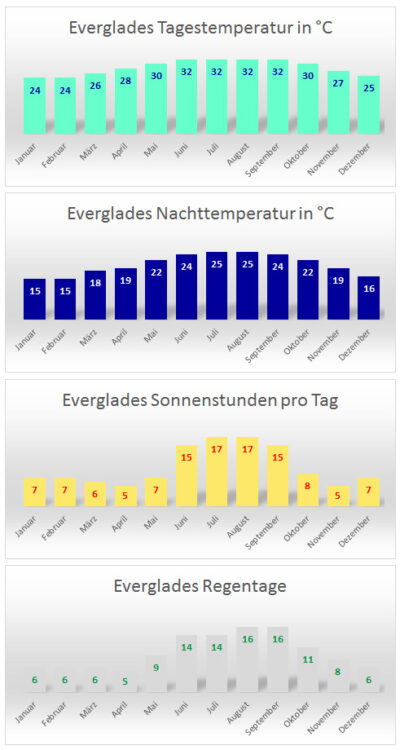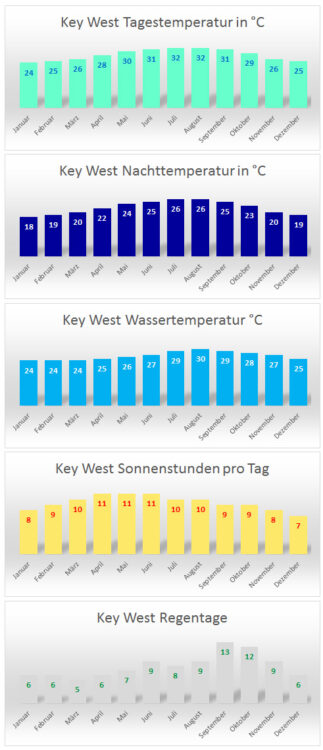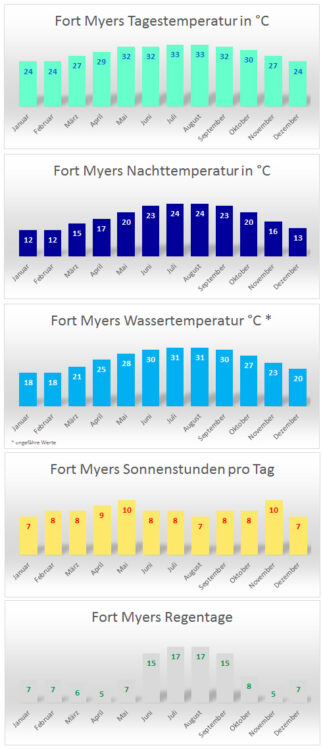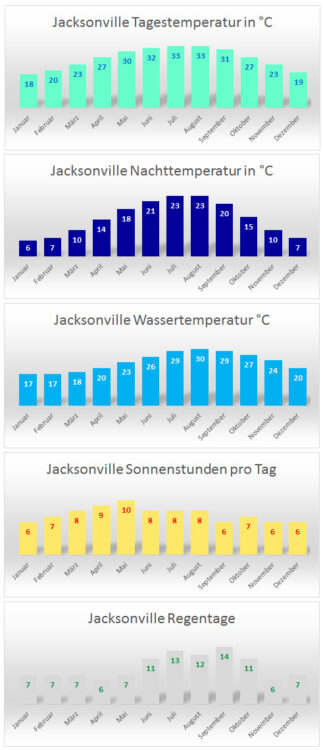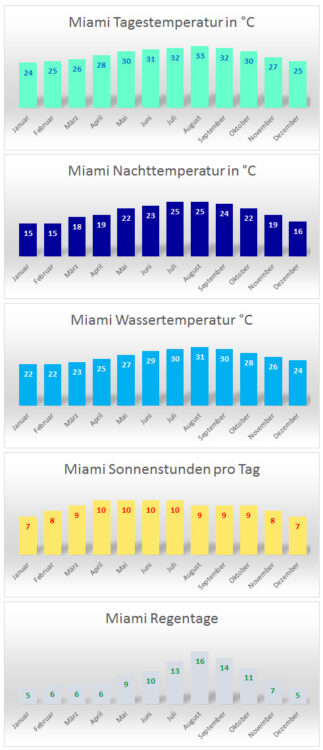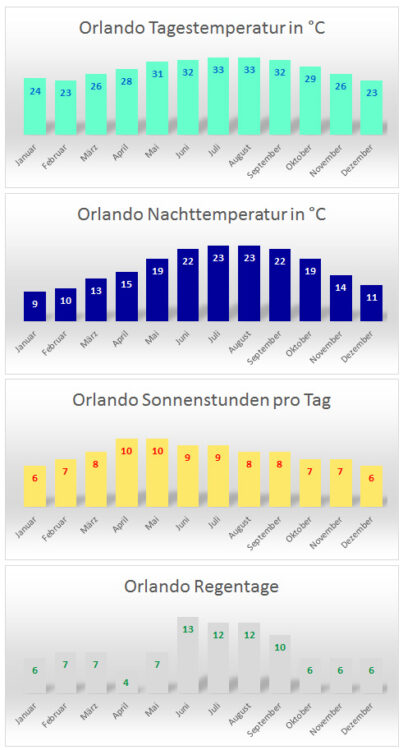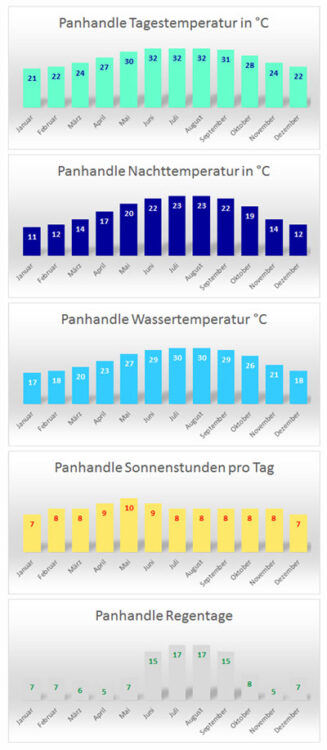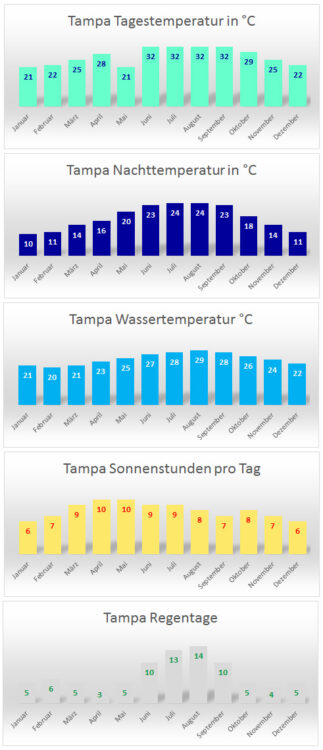Climate & Weather | the Best Time to Travel in the Sunshine State

As is typical in the tropics, Florida also has a dry season and a rainy season. Especially in the summer months, the weather can often disrupt vacation plans. Because when it rains, it usually does so properly. To ensure you’re on the sunny side weather-wise, we’ve prepared an overview for you.
From November to April is winter time and climatically the dry season in Florida, from May to October is summer time, which is also when the rainy season begins. In winter, temperatures are around 21°C (70°F) with plenty of sunshine, hardly disturbed by any rain. From May to October, it rains regularly. This makes it not only very hot but also humid. This weather reaches its peak in July/August.
When is the Best Time to Travel to Florida?
The “right” travel time depends on what you want to do and where in Florida you’re headed. The weather varies quite a bit from the Panhandle in the north to the Keys in the south. Therefore, additional climatic information will be provided for each region.
If you love bicycle and kayak tours, want to explore the nature parks or visit Disney World, you should come to Florida in the winter months. Disadvantage: It’s expensive because the snowbirds populate the Sunshine State. Especially in Miami and South Florida, it’s peak season then, which also attracts larger crowds. In North Florida like the Panhandle, it’s too cold in winter, so while incomparably fewer, summer still tends to attract more tourists here.
If you prefer sun, beach, and sea, you can indulge in bathtub-like bathing in the Gulf of Mexico. However, from June to November, there’s a risk of having to tell loved ones back home about the “hurricane” experience. The hurricane season falls in the summertime with its peak in September and October.
Climate Overview of Regions in Florida
Everglades Florida Keys Fort Myers Jacksonville Miami Orlando Panhandle Tampa

